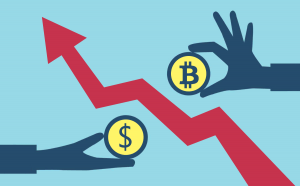slow stochastic: Is a Slow Stochastic Effective in Day Trading?
Содержание

This bullish divergence may have warned traders to exit their shortsells, traders may have interpreted that the price of gold had a strong potential of bottoming. The Stochastic Slow might be viewed as superior due to the smoothing effects of the moving averages which equates to less false potential buy and sell signals. Stochastic is an oscillator that measures the position of a stock or security compared with its recent trading range indicating overbought or oversold conditions. One of the most reliable signals is to wait for a divergence to develop from overbought or oversold levels.

Like a sports car, the fast stochastic is agile and changes direction very quickly in response to sudden changes. The slow stochastic takes a little more time to change direction but promises a very smooth ride. The stochastic oscillator was developed in the late 1950s by George Lane. Stochastics are most effective in broad trading ranges or slow moving trends. Two lines are graphed, the slow oscillating %K and a moving average of %K, commonly referred to as %D. George Lane, a financial analyst from the 1950s is one of the first to publish on the use of stochastic oscillators to forecast prices.
Once using the formula above, the trader should then take the three period Simple Moving Average of this value in order to calculate the %K result for the Stochastic Slow Strategy. Strategy using Slow Heiken Ashi by Glaz and Exponential moving averages. Looking for someone to help me turn the strategy into non-reoccuring alerts as I am having trouble doing so. And can be manipulated by changing the period considered for highs and lows. TradingSim accelerates the steep learning curve of becoming a consistently profitable trader. The platform does this by allowing you to replay the market as if you were trading live.
What Is The Stochastic Fast?
The trade is stopped out by a rally above the last minor High. The Slow Stochastic applies further smoothing to the Stochastic oscillator, to reduce volatility and improve signal accuracy. The difference between the Slow and Fast Stochastic Oscillator is the Slow %K incorporates a %K slowing period of 3 that controls the internal smoothing of %K. Setting the smoothing period to 1 is equivalent to plotting the Fast Stochastic Oscillator. The content on this website is provided for informational purposes only and isn’t intended to constitute professional financial advice. The content is provided on an as-is and as-available basis.
After the first moving average is applied to the fast stochastics %K, an additional three-period moving average is then applied—making what is known as the slow stochastics %D. Close inspection will reveal that the %K of the slow stochastic is the same as the %D on the fast stochastic. A %K result of 80 is interpreted to mean that the price of the security closed above 80% of all prior closing prices that have occurred over the past 14 days. The main assumption is that a security’s price will trade at the top of the range in a major uptrend. A three-period moving average of the %K called %D is usually included to act as a signal line. Transaction signals are usually made when the %K crosses through the %D.

From this point, OAS has an ~4 percent up move before finally topping out. Another approach is to allow the slow stochastics to cross above a certain threshold to confirm that the counter move has begun. The downside to this approach, of course, is that the move is likely to have a few points behind it before you enter the trade. On the flip side, this will prevent you from getting caught in a stock that is flatlining. In this article, I am going to discuss the basics of the slow stochastics indicator and then dive into trading strategies you can test in the market. Chart 6 shows International Gaming Tech with a bullish divergence in February-March 2010.
Adding randomness, or “noise” to understanding the movement of stock prices was seen as a major innovation. If you’d like a primer on how to trade commodities in general, please see our introduction to commodity trading here. The Stochastic Slow confirmed the upward movement of gold futures prices by making a higher low.
How to withdraw the money you earned with FBS?
Prices close near the top of the range during uptrends and near the bottom of the range during downtrends. The stochastic indicator can be used by experienced traders and those learning technical analysis. In general, a slow stochastic measures the relative position of the latest closing price to the high and low over the past 14 periods. When using this indicator, the main assumption is that the price of an asset will trade near the top of the range in an uptrend and near the bottom in a downtrend. This indicator is very effective when used by day traders, but one problem that may arise is that some charting services might not include it as an option on their charts. If this is the case for you, you may want to consider re-evaluating which charting service you use.
- A shorter look-back period will produce a choppy oscillator with many overbought and oversold readings.
- Another popular trading strategy using the stochastic indicator is a divergence strategy.
- Her expertise is in personal finance and investing, and real estate.
- The default settings are to use the most recent 14 bars , the high and low of that period to establish a range and the close as the current price .
When the stochastic lines are below 20, it signals that the instrument is oversold. When the stochastic indicator is applied, a white line will appear below the chart. There will also be a red line on the chart, which is the three-period moving average of %K. This script enables you to use 9 slow stochastic with timeframe 5, 10, 14, 20, 40, 60, 80, 100, 120; on purposes to see from longterm and short term condition of a stock.
Fast & Slow Stochastic
As the Stochastic Oscillator is range-bound, it is also useful for identifying overbought and oversold levels. In technical analysis of securities trading, the stochastic oscillator is a momentum indicator that uses support and resistance levels. The term stochastic refers to the point of a current price in relation to its price range over a period of time. This method attempts to predict price turning points by comparing the closing price of a security to its price range. The “speed” of a stochastic oscillator refers to the settings used for the %D and %K inputs. The result obtained from applying the formula above is known as the fast stochastic.
Lane, over the course of numerous interviews, said that the stochastic oscillator does not follow price or volume or anything similar. He indicated that the oscillator follows the speed or momentum of price. A stochastic oscillator is used by technical analysts to gauge momentum based on an asset’s price history.
Is the slow stochastic a good indicator?
The slow stochastic is one of the most popular indicators used by day traders because it reduces the chance of entering a position based on a false signal.
According to Lane you use the stochastics indicator with a good knowledge of “Elliot Wave Theory”. A Center piece of his teaching is the divergence and convergence of trend lines drawn on stochastics as diverging/converging to trend lines drawn on price cycles. The basis for this indicator is the premise that prices will close near 100 in a rising market and close near 0 in a declining market. The Stochastics can show when the asset you trade is overbought or oversold. As a result, the observation of the indicator may provide you with trade signals and ideas. A stochastic study is useful when monitoring fast markets.
How to Get Best Site Performance
Some traders find that this indicator is too responsive to price changes, which ultimately leads to being taken out of positions prematurely. To solve this problem, the slow stochastic was invented by applying a three-period moving average to the %K of the fast calculation. Stochastics attempts to predict turning points by comparing the closing price of a security to its price range.
What are the best settings for slow stochastic?
- %K – 5 days.
- %K slowing periods – 3 days.
- %D – 3 days.
- All are simple moving averages.
- overbought level – 70%
- oversold level – 30%
The defense has an edge as long as it prevents the offense from crossing the 50-yard line. A Stochastic Oscillator cross above 50 signals that prices are trading in the upper half of their high-low range for the given look-back period. Conversely, a cross below 50 means that prices are trading in the bottom half of the given look-back period. The original formula used a 3 periodsimple moving average, but this can be varied, based on the time frame that you are analyzing. The lookback period is usually 5 days or 14 days, but it can be any number between 5 days and 21 days.
Buy and sell signals can also be given when %K crosses above or below %D. However, crossover signals are quite frequent and can result in a lot of whipsaws. Use the Fast Stochastic Oscillator indicator to identify buying or selling divergences. The https://forexbitcoin.info/ Oscillator uses a 3-day SMA while the Full Stochastic Oscillator is the Slow Stochastic Oscillator with a customized period.
When an increasing %K line crosses above the %D line in an oversold region, it is generating a buy signal. When a decreasing %K line crosses below the %D line in an overbought region, this is a sell signal. These signals tend to be more reliable in a range-bound market. Generally, traders look to place a buy trade when an instrument is oversold. A buy signal is often given when the stochastic indicator has been below 20 and then rises above 20.
What is difference between stochastic and stochastic slow?
The ‘fast’ stochastic uses the most recent price data, while the ‘slow’ stochastic uses a moving average. Therefore, the fast version will react more quickly with timely signals, but may also produce false signals. The slow version will be smoother, taking more time to produce signals, but may be more accurate.
Remember, the u s. dollar index futures is an oscillator, and like any other oscillator, it can trend sideways for an extended period. Please do not pop out Excel and start cranking through slow stochastics calculations using raw market data and the slow stochastic formula. The settings on the Stochastic Oscillator depend on personal preferences, trading style and timeframe. A shorter look-back period will produce a choppy oscillator with many overbought and oversold readings. A longer look-back period will provide a smoother oscillator with fewer overbought and oversold readings.
Investing involves risk, including the possible loss of principal.
And to display side-by-side charts for Apple and Facebook enter AAPL,FB. Enter one or more Symbol Ids separated by commas and click ‘Get Chart’ to display the charts. Click ‘Customize Chart Studies’ to open or close the chart customization panel. You can create unlimited combinations of Symbols and Chart settings for easy retrieval across all of your devices and locations. %D moving average method, specified as a character vector.

